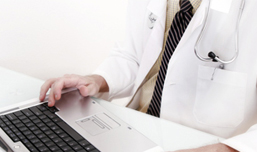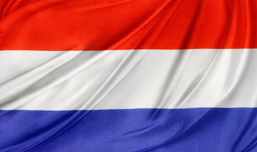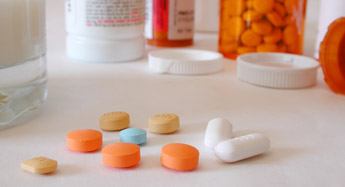Infringement of second medical use patents
NOTE - Information correct at date of publication. There have since been updates to this content: Please see updated content here |
February 2015
With the increase in off-label prescribing in Europe, some argue that the carve-outs used by generic firms (see "Skinny labelling and the blue box concept") to avoid second medical use patents ignore market realities and that even if a generic drug is formally approved only for unpatented uses, doctors may still prescribe for the patented indication, and pharmacists may nonetheless substitute the generic for all indications once it becomes available1. In some cases, this has led to disputes in the national courts about the infringement of second medical use patents. Some law in this area is already established in Germany, but it was not until January 2015 that a UK court substantively addressed the subject. Here we explain the approaches that the courts of these two countries are taking.
Second medical use infringement in the UK
For a long time, the courts in the UK have not had the opportunity to address when a second medical use patent might be infringed by the sale of a generic medicine that is unauthorised for a non-patented use. The decision of the Court of Appeal in Grimme Maschinenfabrik v Derek Scott2 had led to speculation that the principle established in that case – a person or company is liable for indirect infringement if they supply 'means essential' to a patented invention, when they know or it is obvious that the "ultimate users will intend to do acts amounting to infringement" – could be applied to the second medical use scenarios. However, in a decision of January 2015 called Warner-Lambert Company LLC v Actavis Group PTC EHF & Ors3, which concerns the sale of generic pregabalin (Lecaent), Arnold J has rejected this approach in respect of Swiss-type claims. The reason is simply that Swiss-type claims are process claims to the manufacture of a drug and that the ultimate users in this case – wholesalers and pharmacists – will not be using Lecaent to prepare a pharmaceutical composition according to the Swiss-type claim at issue.
Instead, it is held in Warner-Lambert that because a Swiss-type claim is a process claim, the judge treats the matter as a question of direct infringement under section 60(1)(c) Patents Act 1977. Section 60(1)(c) makes it an infringement to dispose of, or offer to dispose of, "any product obtained directly by means of [the claimed] process." According to Arnold J in Warner-Lambert, in a Swiss-type claim the word "for" imparts nothing less than a subjective intention on the part of the manufacturer that the medicament or pharmaceutical composition concerned will be used for treating the specified condition. If there is no evidence that the generic manufacturer intended the drug to be used for the patented use, there is no infringement. There was no such evidence in Warner-Lambert and therefore the judge held there was no serious issue to be tried.
 Furthermore, even if there had been a serious issue to be tried, Arnold J held that the balance of the risk of injustice would favour refusal of the relief sought by Warner-Lambert (which included: obligations to make it a condition of any oral or written agreement entered into with a pharmacy for the supply of Lecaent that the pharmacy shall use reasonable endeavours not to supply or dispense Lecaent to patients who have been prescribed pregabalin for the treatment of pain; removable notifications on supplies of Lecaent stating that the product is not authorized for the treatment of pain; informing pharmacists, NICE Medicines and Prescribing Centre and all Clinical Commissioning Groups in the UK, that Leceant is not to be prescribed for pain; and informing Warner-Lambert's solicitors of the names of intermediaries supplied).
Furthermore, even if there had been a serious issue to be tried, Arnold J held that the balance of the risk of injustice would favour refusal of the relief sought by Warner-Lambert (which included: obligations to make it a condition of any oral or written agreement entered into with a pharmacy for the supply of Lecaent that the pharmacy shall use reasonable endeavours not to supply or dispense Lecaent to patients who have been prescribed pregabalin for the treatment of pain; removable notifications on supplies of Lecaent stating that the product is not authorized for the treatment of pain; informing pharmacists, NICE Medicines and Prescribing Centre and all Clinical Commissioning Groups in the UK, that Leceant is not to be prescribed for pain; and informing Warner-Lambert's solicitors of the names of intermediaries supplied).
The result is a frustrating one for patentees. However, Arnold J appears to suggest that the solution to this problem is not in the power of the parties and the courts to resolve. Instead, the answer is for prescribers to prescribe by reference to the brand name for the patented indication and by reference to the generic name for non-patented indications. Arnold J hoped the NHS England and NHS Wales would issue guidance to encourage this.
Second medical use infringement in Germany
As in the UK, the practical enforcement of second medical use patents, in particular with regard to adducing evidence, and in cases of cross label and off-label use is rather difficult in practice. Here we take a closer look at the requirements for proving infringement in Germany.
Liability in general
There are only a few, but well established, cases in Germany on the question of infringement. In most cases, the party has marketed the drug with instructions on the label that describe the patented use. Such a party might be liable for direct infringement because by adding the instructions, the drug is manifestly arranged (or obviously prepared) for the use claimed in the patent ("sinnfällige Herrichtung")4. Such manifest arrangement is not necessarily made by the instructions on the label, although this is the most frequent way. Other ways may include the formulation, dosage or provision of ready-to-use preparations of a drug, provided that it is done to achieve the patented purpose.
However, a manifest arrangement requires that the purpose of use is closely linked to the product as marketed. There have been two recent cases where it has been found that information about the drug in marketing materials and flyers, as well as explanations made by sales people, are not sufficiently attributable to the product5. The courts denied direct infringement in these cases despite the fact that the sales people explaining that the product could also be used for the patented purpose were employees of the drug manufacturer. The courts argued that the drug had been marketed as such – in a way not being covered by the second medical use patent. As the flyers, marketing materials and explanations were not directly linked to the product, it is not certain that the customer would have taken them into consideration at all, so it is not clear that the patented purpose of the second medical use patent would have been fulfilled.
 In principle, the physician prescribing a drug could be liable for patent infringement; in particular if a drug is prescribed for "off-label" or "cross-label" use as he/she is not exempted from patent infringement under the German Patent Act6. However, there is so far no case law known where a physician has been sued by a patent proprietor. The potential liability of the pharmacist also very much depends on the regulatory qualification of the drug.
In principle, the physician prescribing a drug could be liable for patent infringement; in particular if a drug is prescribed for "off-label" or "cross-label" use as he/she is not exempted from patent infringement under the German Patent Act6. However, there is so far no case law known where a physician has been sued by a patent proprietor. The potential liability of the pharmacist also very much depends on the regulatory qualification of the drug.
Indirect infringement
It is interesting to note that indirect infringement has not been alleged in the two cases referred to above. This might be because according to established case law, only the offering and supply for the purpose of enabling the manifest arrangement of the product can constitute indirect infringement. This means that the offering or supplying for the purpose of the immediate use does not constitute indirect infringement7.
Liability for indirect infringement in general requires that the manufacturer must have known, or it must have been obvious from the circumstances, that the drug was suitable and intended to be used for the use of the invention8. In particular, in cases of cross-label use, it is very much a question of finding facts and evidence to prove such knowledge or obviousness, respectively. There is no case law on this specific question in Germany yet, on whether and to what extent only indications for a potential cross-label use such as a higher number of sales can create the necessary subjective link, bearing in mind that the manufacture of the medicament as such is in the public domain and allowed.
In case there is indirect infringement, injunctive relief can only be requested with regard to the prohibition of enabling the patented use. Also, the claim for damages might be difficult to enforce: because the indirect infringer must pay the damage caused by the direct infringement, the patent proprietor must prove direct infringement. In practice, it turns out to be very difficult to adduce evidence for the amount of damages sought when the product could be used for patented as well as for non-patented purposes.
Cross-label use
As explained above, the marketing and sale of a drug might constitute infringement if the drug has been manifestly arranged for the patented purpose. Given the recent case law on marketing flyers and advertisements, it is difficult to imagine a case where the cross-label use, for example the prescription of the drug for the patented use by a physician, is sufficiently attributable to the marketing and sale of the drug. Nonetheless, it is to be noted that recent case law neither reflects on the liability of the sales persons making such indications to customers nor examines the liability of physicians for a cross-label prescription.
Any new developments due to new EPC 2000 claims?
There are discussions about whether the scope of protection of European Patent Convention 2000 ("EPC 2000") claims (that is, second medical use claims made in the form "X for use in treating Y") would be different compared to purpose limited use claims / Swiss-type claims as they are not use claims, but product claims. With regard to EPC 2000 claims there is no case law on infringement yet9.
The recent "Kollagenase I" decision10 of the German Federal Supreme Court related only to the patentability of second medical use claims. Hence, it did not reflect on the scope of protection of EPC 2000 claims in contrast to purpose-limited use claims / Swiss-type claims. Nonetheless it is to be noted that in the end, the German Federal Supreme Court did not distinguish between the different kinds of claim language.
The Warner-Lambert decision also does not deal with EPC 2000 claims. However, given that the Warner-Lambert decision turns on the construction of "for" it seems unlikely that such a claim would be treated differently to a Swiss-type claim.
Developments in the Netherlands
Less than a week after the UK Warner-Lambert decision in the UK, the Court of Appeal in the Hague took a different approach in Novartis AG v Sun Pharmaceutical Industries (Europe) BV11. In this case, Sun was held liable for indirect infringement for the  sale of zoledronate, despite the fact that the patented indication for osteoporosis had been carved out of its Summary of Product Characteristics ("SmPC") and patient leaflet. The quantity of zoledronate placed on the market by Sun far exceeded the quantity needed for the number of patients suffering from pagets disease, indicating that Sun knew that its product would be used for the infringing indication. The court also held that Sun needed to do more to prevent infringement by those who were supplied with the drug, including: taking action to ensure that the tender process of the health insurer concerned distinguishes between patented and non-patented uses and making agreements with hospitals to prevent infringements. Sun had also informed its customers that Novartis had patent protection on the osteoporosis indication.
sale of zoledronate, despite the fact that the patented indication for osteoporosis had been carved out of its Summary of Product Characteristics ("SmPC") and patient leaflet. The quantity of zoledronate placed on the market by Sun far exceeded the quantity needed for the number of patients suffering from pagets disease, indicating that Sun knew that its product would be used for the infringing indication. The court also held that Sun needed to do more to prevent infringement by those who were supplied with the drug, including: taking action to ensure that the tender process of the health insurer concerned distinguishes between patented and non-patented uses and making agreements with hospitals to prevent infringements. Sun had also informed its customers that Novartis had patent protection on the osteoporosis indication.
Conclusions
In circumstances where a generic medicine is marketed for uses other than those patented and at a significantly lower price than the patented medicine, there could be instances in which the generic medicine is prescribed or substituted for off-label and patented uses. In this respect, innovators argue that the ability of a generic company to avoid patent infringement by using an abbreviated label on the generic product ignores the commercial reality. However, in the UK and in Germany, the courts have taken the approach that this is not enough to find infringement. Indeed, the German doctrine of manifest arrangement appears not dissimilar to the UK court's requirement that there is an intention by the generic manufacturer that their product is used for the patented indication. However, as the Sun Pharmaceuticals case shows, there is not widespread harmony in Europe on this issue. Even with convergence of interpretation on the law between the Member States, there are still the widely differing healthcare systems in Europe to consider. Where the intention and / or knowledge of the manufacturer is concerned, a finding of infringement in any European Member State may depend on factors such as procurement and prescribing practices, in particular the frequency and known acceptability of off-label prescribing, together with policies on substitution and interchangeability. There is no prospect of uniformity on these matters any time soon.
If you have any questions on this article or would like to propose a subject to be addressed by Synapse please contact us.
1 "Off-label" use usually means the use of a drug for an unapproved indication, age group, dosage or way of administration while "cross-label" use means the use of a drug for an approved and patented indication, age group, dosage or way of administration that is not mentioned on the label instructions. In this regard, the often used term "skinny labelling" refers to label instructions that do not mention the patented use, but only the uses that are already off-patent.
4 Düsseldorf District Court, docket number 4a 0 12/03, 24 February 2004, GRUR-RR 2004, 193 – Ribavirin; Düsseldorf Court of Appeal, docket number 2 U 54/11, 31 January 2013 – Cistus Incanus; Düsseldorf District Court, docket number 4a O 145/12, 14 March 2013 – Chronic Hepatitis C.
5 Düsseldorf Court of Appeal, docket number 2 U 54/11, 31 January 2013 – Cistus Incanus; Düsseldorf District Court, docket number 4a O 145/12, 14 March 2013 – Chronic Hepatitis C.
6 Section 11, n° 1 only exempts private use, e.g. the use of the drug by the patient itself. Section 11 n° 3 only exempts the direct single preparation of a drug in a pharmacy based on the prescription of a physician and the acts relating to such single preparation. As a matter of principle, exemptions are to be construed narrowly and cannot be applied in an analogous way to different scenarios.
7 Düsseldorf District Court, docket number 4a 0 12/03, 24 February 2004, GRUR-RR 2004, 193 – Ribavirin.
8 Section 10 German Patent Act.
9 See in detail the German group report on the AIPPI working question Q238 "Second medical use or indication claims".
10 German Federal Supreme Court, docket number X ZB 5/13, 25 February 2014, GRUR 2014, 461 – Kollagenase I.


Paul England
Paul is a senior associate and professional support lawyer in the Patents group based in our London office.

"...the answer is for prescribers to prescribe by reference to the brand name for the patented indication and by reference to the generic name for non-patented indications."
"Even with convergence of interpretation on the law between the Member States, there are still the widely differing healthcare systems in Europe to consider."

